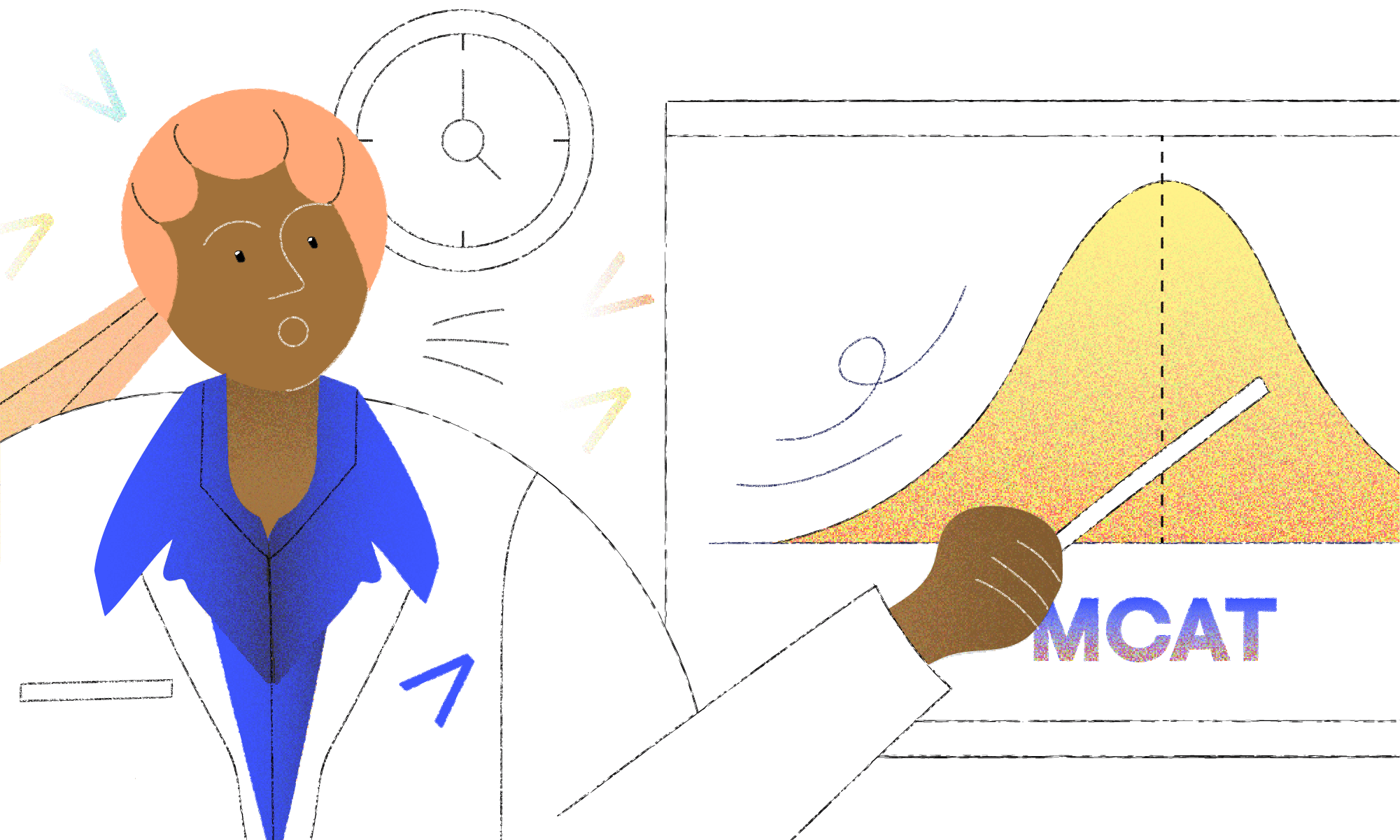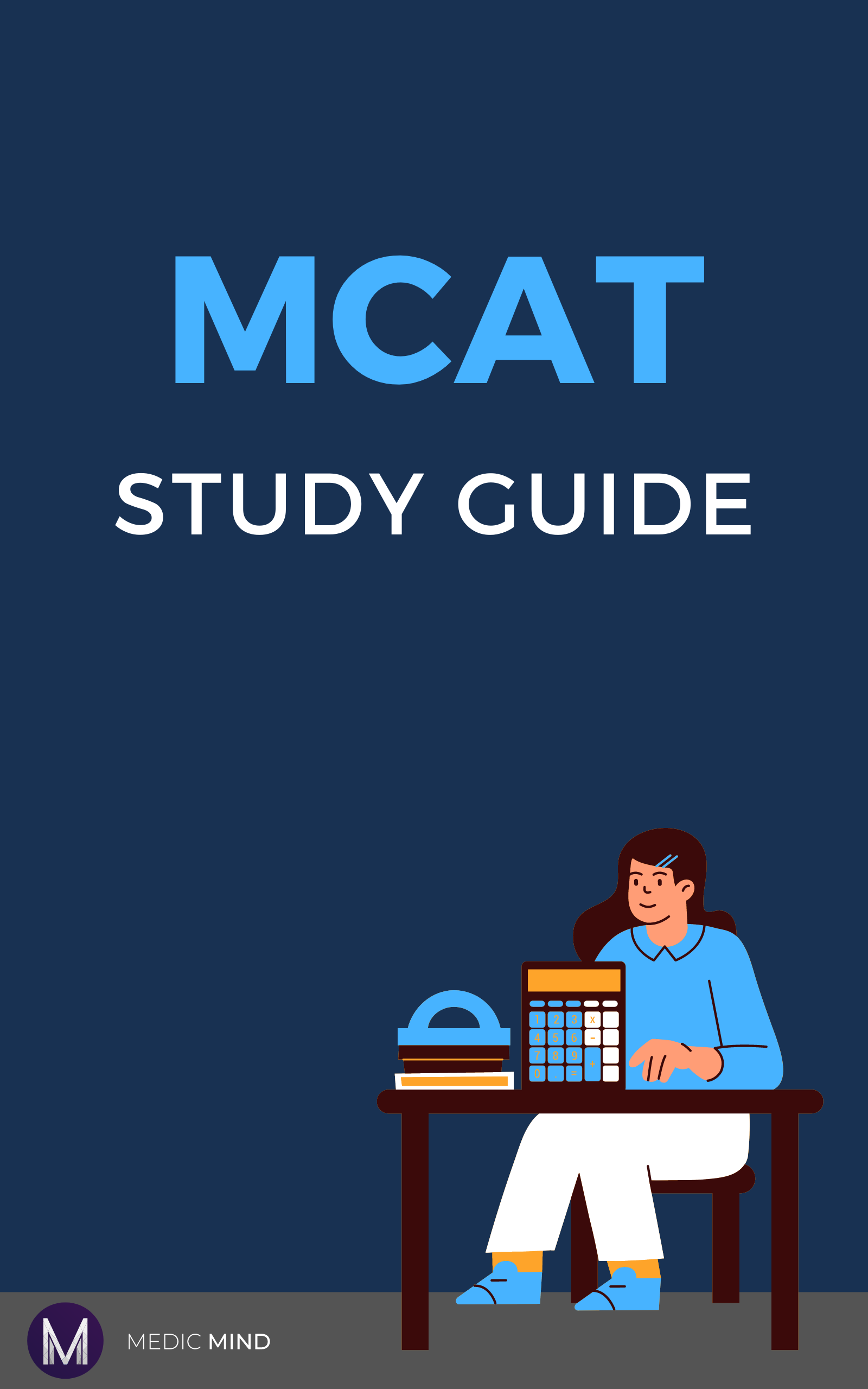
MCAT General Chemistry Practice Questions
Did you know that according to the Association of American Medical Colleges (AAMC), over 90,000 aspiring medical professionals take the Medical College Admission Test (MCAT) each year? With such a significant number of individuals striving to pursue a career in medicine, excelling in the MCAT is crucial.
Among its various sections, General Chemistry holds considerable weight, assessing foundational knowledge essential for success in medical school.
In this blog post, we’ll delve into MCAT General Chemistry, offering a brief overview of key topics and providing practice questions to enhance your preparation. Whether you’re just beginning your MCAT journey or seeking to sharpen your skills, these practice questions will aid in reinforcing your understanding and readiness for test day.
MCAT General Chemistry – A Brief Overview:
General Chemistry plays a pivotal role in the MCAT exam, comprising a substantial portion of the assessment across multiple sections. With approximately 21 questions distributed throughout the Biological and Biochemical Foundations of Living Systems and Chemical and Physical Foundations of Biological Systems sections, it is clear that a strong understanding of General Chemistry is essential for achieving a competitive score.
In the Biological and Biochemical Foundations of Living Systems section, General Chemistry questions constitute 30% of the total, totaling 18 questions out of 59. Additionally, in the Chemical and Physical Foundations of Biological Systems section, General Chemistry questions contribute 5% of the total, comprising 3 questions.
These figures underscore the significance of General Chemistry in the MCAT exam and emphasize the importance of comprehensive preparation in this subject area. Success in the General Chemistry section not only boosts your overall MCAT score but also demonstrates your proficiency in foundational chemical principles essential for medical school.
To excel in the General Chemistry section, it is crucial to allocate sufficient study time, practice with MCAT-style questions, and solidify your understanding of key concepts. By doing so, you’ll be well-equipped to tackle the diverse array of General Chemistry questions on exam day, setting yourself up for success in your medical school journey.
MCAT General Chemistry Topics
Below are the various concepts encompassed in MCAT general chemistry:
- Acids and Bases
- Atomic Structure
- Bonding and Chemical Interactions
- Chemical Kinetics
- Electrochemistry
- Equilibrium
- Solutions
- The Gas Phase
- Stoichiometry
- Thermochemistry
- Redox Reactions
MCAT General Chemistry Practice Questions
1. During a chemical reaction, what factor does NOT affect the equilibrium state?
A) Increasing or decreasing heat.
B) Changing the amount of a catalyst.
C) Altering the volumes of the reactants.
D) Adjusting the concentrations of the reactants.
Answer: A) Increasing or decreasing heat.
Explanation: Changes in temperature (heat) do not affect the equilibrium state of a chemical reaction because equilibrium constants (K) are temperature-dependent constants. Altering the temperature shifts the equilibrium position but does not affect the value of K.
2. For a reaction to occur, which condition MUST be TRUE?
A) The particles of the reactant must clash.
B) Correct orientation of the reactant particles is necessary.
C) Particles of the reactant have sufficient energy in collisions.
D) All of the above
Answer: D) All of the above.
Explanation: All three conditions listed (particle collision, correct orientation, and sufficient energy) must be met for a reaction to occur effectively. Without collision, orientation, or energy, the reaction will not proceed.
3. In a third-order reaction involving two reactants and two products, if the concentration of the first reactant is doubled, the rate increases by a factor of two. What happens if the concentration of the second reactant is halved?
A) There will be a two-fold rise in rate.
B) There will be a four-fold increase in rate.
C) The rate will fall by a factor of 2.
D) The rate will fall by a factor of 4.
Answer: A) There will be a two-fold rise in rate.
Explanation: In a third-order reaction, doubling the concentration of one reactant doubles the rate. Since the reaction involves two reactants, changing the concentration of the other reactant doesn’t directly affect the rate.
4. When heat is applied to nitrogen gas in a tight, rigid container, what happens to the pressure inside the container?
A) The gas molecules group into clusters with more momentum.
B) Some nitrogen molecules split, creating extra particles and increasing pressure.
C) Gas molecules travel more quickly, leading to more frequent intermolecular collisions.
D) Gas molecules move more quickly, resulting in more collisions with the container.
Answer: D) Gas molecules move more quickly, resulting in more collisions with the container.
Explanation: When heat is applied to a gas, its molecules move faster and collide more frequently with the container walls, increasing the pressure inside the container according to the ideal gas law.
5. At 20°C, MgSO4 dissolves in water at a rate of roughly 25 g/100 mL. What advantage does a 0.25 g/mL solution of MgSO4 created at 37°C have over one made at 20°C?
A) Dissolves more slowly and has fewer ions in solution.
B) Dissolves slowly but has an equal ion concentration in solution.
C) Has a larger ion concentration in solution and dissolves more quickly.
D) Has an identical ion concentration in solution but dissolves more quickly.
Answer: C) Has a larger ion concentration in solution and dissolves more quickly.
Explanation: Increasing the temperature increases the solubility of most solid solutes, including MgSO4. Therefore, the solution made at 37°C will have a higher concentration of ions and dissolve more quickly than the one made at 20°C.
6. A “white gold” brooch is plated with rhodium sulfate (Rh2(SO4)3(aq)). How long does it take to plate 3.0 x 10^-5 g of rhodium when a 2.0 A current is available? (Faraday constant is 96,500 C/mol e-)
A) 0.56 seconds
B) 0.042 seconds
C) 0.0009 seconds
D) 0.0098 seconds
Answer: B) 0.042 seconds
Explanation: To calculate the time taken for plating, use the formula:
Substituting the given values, we get:
7. Why do halogens and alkaline earth metals often form ionic bonds?
A) Halogens and alkaline earth metals in the same row have different atomic radii.
B) Compared to halogens, alkaline earth metals have substantially higher electron affinities.
C) Both halogens and alkaline earth metals create entire octets by sharing electrons equally.
D) Compared to alkaline earth metals, halogens have substantially higher electron affinities.
Answer: A) Halogens and alkaline earth metals in the same row have different atomic radii.
Explanation: Halogens (group 17) have higher electron affinities and smaller atomic radii compared to alkaline earth metals (group 2), making them more likely to gain electrons and form ionic bonds with alkaline earth metals.
8. What factors determine an element’s atomic radius?
I. The quantity of valence electrons
II. The quantity of electron shells
III. The number of neutrons in the nucleus
A) I only
B) II only
C) I and II only
D) I, II, and III
Answer: C) I and II only
Explanation: Atomic radius is primarily determined by the number of electron shells (II) and the quantity of valence electrons (I). The number of neutrons in the nucleus (III) primarily affects atomic mass but has minimal impact on atomic radius.
9. Which of the following statements regarding the periodic trend of atomic radius is correct?
A) Atomic radius decreases as you move down a group and increases as you move across a period.
B) Atomic radius increases as you move down a group and decreases as you move across a period.
C) Atomic radius increases as you move down a group and remains constant as you move across a period.
D) Atomic radius decreases as you move down a group and remains constant as you move across a period.
Answer: B) Atomic radius increases as you move down a group and decreases as you move across a period.
Explanation: Atomic radius generally increases down a group due to the addition of electron shells, while it decreases across a period due to increased effective nuclear charge pulling the electrons closer to the nucleus.
10. Which of the following statements accurately describes the relationship between frequency and wavelength of electromagnetic radiation?
A) Frequency and wavelength are inversely proportional.
B) Frequency and wavelength are directly proportional.
C) Frequency is the square root of the wavelength.
D) Frequency is unrelated to wavelength.
Answer: A) Frequency and wavelength are inversely proportional.
Explanation: Frequency and wavelength of electromagnetic radiation are inversely proportional according to the equation (c = frequency x wavelength), where (c) is the speed of light (a constant). As frequency increases, wavelength decreases, and vice versa.
What’s Next?
Prepare for your MCAT with confidence and expertise. Join Medic Mind for comprehensive study resources, MCAT tutoring, and personalized guidance. Ace your exam and unlock your path to success today!
FAQs:
What is the MCAT exam, and why is it important for aspiring medical students?
The MCAT (Medical College Admission Test) is a standardized exam used by medical schools to assess applicants’ readiness for medical education. It evaluates critical thinking, problem-solving, and knowledge of natural, behavioral, and social science concepts essential for medical practice. A strong MCAT score is crucial for admission to medical school, as it provides admissions committees with an objective measure of applicants’ academic abilities and potential for success in medical studies.
How should I prepare for the MCAT General Chemistry section?
To excel in the MCAT General Chemistry section, it’s essential to review key concepts thoroughly and practice with sample questions and practice exams. Focus on understanding fundamental principles such as stoichiometry, chemical reactions, and atomic structure. Utilize resources like textbooks, online courses, and study guides to reinforce your understanding and apply concepts to real-world scenarios. Additionally, consider seeking guidance from tutors or study groups to clarify doubts and enhance your preparation.
What are some effective strategies for managing time during the MCAT exam?
Time management is critical during the MCAT exam to ensure you complete all sections within the allotted time. Prioritize questions based on difficulty, starting with easier ones to build momentum and confidence. Pace yourself by setting time limits for each section and question, allowing ample time for review. Practice timed mock exams to simulate test-day conditions and refine your pacing strategies. Additionally, familiarize yourself with the exam format and structure to optimize your approach to answering questions efficiently.
Are there any specific study materials recommended for MCAT General Chemistry preparation?
Several reputable study materials are available for MCAT General Chemistry preparation, including review books, practice question banks, and online courses. Look for resources that cover the MCAT General Chemistry topics comprehensively and provide ample practice opportunities. Popular study materials endorsed by successful MCAT test-takers often include content from reputable publishers and online platforms known for their quality and accuracy. Additionally, consider consulting with peers, mentors, or pre-med advisors for recommendations tailored to your learning style and needs.
How can I improve my understanding of complex MCAT General Chemistry concepts?
Improving comprehension of complex MCAT General Chemistry concepts requires a strategic approach. Break down complex topics into smaller, more manageable components and focus on mastering each component before moving on to the next. Utilize visual aids, diagrams, and mnemonic devices to enhance retention and understanding. Engage in active learning techniques such as teaching the material to others or discussing concepts with peers to reinforce learning. Additionally, seek clarification from instructors, tutors, or online forums when encountering challenging concepts to gain deeper insights and clarity.
Is it necessary to memorize every equation for the MCAT General Chemistry section?
While memorizing equations is important for the MCAT General Chemistry section, it’s equally crucial to understand the underlying principles and concepts behind them. Focus on understanding the relationships and applications of each equation rather than rote memorization. Prioritize memorizing fundamental equations that are frequently used and have broader applications across various topics. Additionally, practice applying equations to solve problems and scenarios to reinforce understanding and retention. Strive for a balance between memorization and conceptual understanding to excel in the MCAT General Chemistry section.






Was this article helpful?
Still got a question? Leave a comment